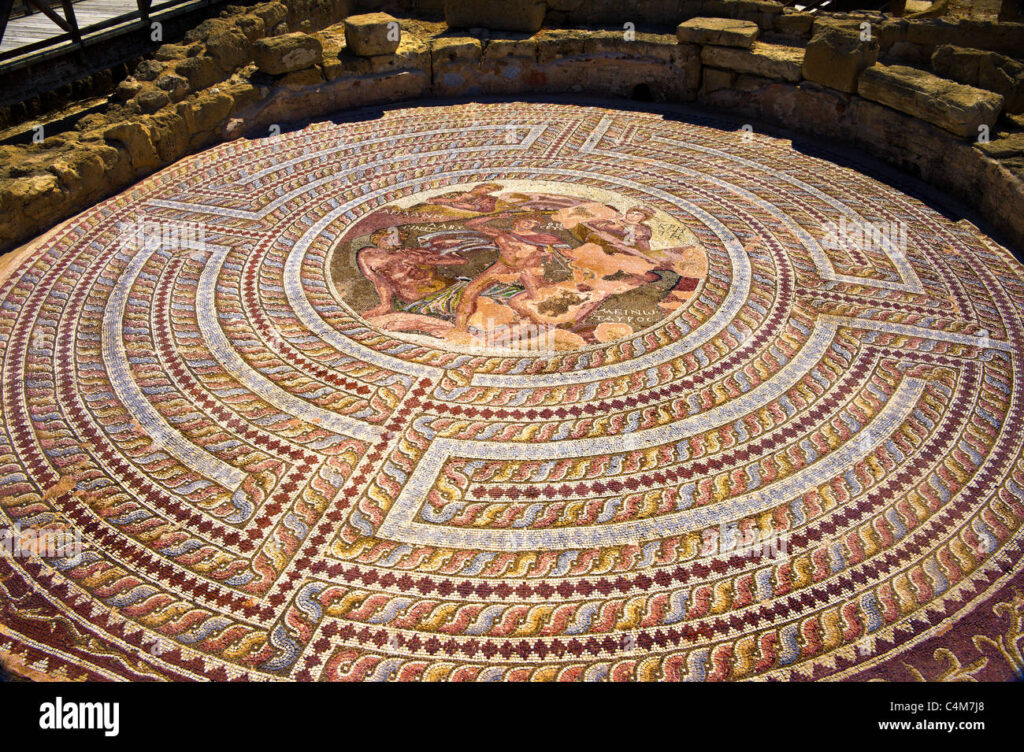Introduction
Paphos Mosaics are a stunning collection of Roman floor mosaic art located in the heart of Paphos, Cyprus. These stunning mosaics date back to the 2nd and 3rd centuries AD, and are widely considered to be some of the finest examples of Roman art in the world. The mosaics depict scenes from mythology, daily life, and many different animals in vivid colors. Today, the mosaics are part of the UNESCO World Heritage Site of Paphos and a major tourist attraction.
History of the Paphos Mosaics
The Paphos Mosaics are an important archaeological site in Cyprus and date back to the 2nd and 3rd centuries AD. During this time, Paphos was a bustling Roman city, and the mosaics were used to decorate the floors of wealthy homes in the city. The mosaics were created by Roman artisans who used tiny pieces of colored marble to create the pictures.
The mosaics were discovered in the 1960s during an excavation of the Paphos site. Since then, the mosaics have been restored and preserved, and are now open to the public. The mosaics depict a variety of scenes, from mythology to daily life, and feature many different animals. The variety of scenes and the vivid colors make the Paphos Mosaics one of the most important examples of Roman art in the world.
Themes of the Paphos Mosaics
The Paphos Mosaics feature a variety of themes, from mythology to daily life. Many of the mosaics depict scenes from the Greek and Roman myths, such as the abduction of Europa, the Battle of the Lapiths and Centaurs, and the Labours of Hercules. Other mosaics depict everyday life scenes, such as fishermen, hunters, and farmers.
The mosaics also feature a variety of animals, both real and mythological. Some of the more common animals portrayed in the mosaics are lions, tigers, horses, and birds. The mosaics also feature some mythological creatures, such as griffins, centaurs, and mermaids.
Preservation of the Paphos Mosaics
The Paphos Mosaics are an important archaeological site and are part of the UNESCO World Heritage Site of Paphos. The mosaics have been preserved and restored over the years, and are now open to the public. The mosaics are also protected by the Department of Antiquities of the Republic of Cyprus, who monitor the site and ensure that the mosaics are preserved for future generations.
Visiting the Paphos Mosaics
The Paphos Mosaics are one of the most popular tourist attractions in Cyprus. The mosaics are open to the public and can be visited year-round. Visitors can explore the mosaics on their own, or take advantage of guided tours, which are available in both English and Greek.
The mosaics are also often included in other tours of the city of Paphos, such as walking tours and bus tours. The mosaics are also a popular destination for school trips, as they provide a unique insight into the history and culture of the area.
Conclusion
The Paphos Mosaics are a stunning collection of Roman floor mosaics located in the heart of Paphos, Cyprus. These stunning mosaics date back to the 2nd and 3rd centuries AD, and are widely considered to be some of the finest examples of Roman art in the world. The mosaics depict a variety of scenes, from mythology to daily life, and feature vibrant depictions of animals. With themes ranging from the abduction of Europa to scenes of everyday life, the Paphos Mosaics offer a fascinating glimpse into the rich cultural tapestry of the Roman era.

